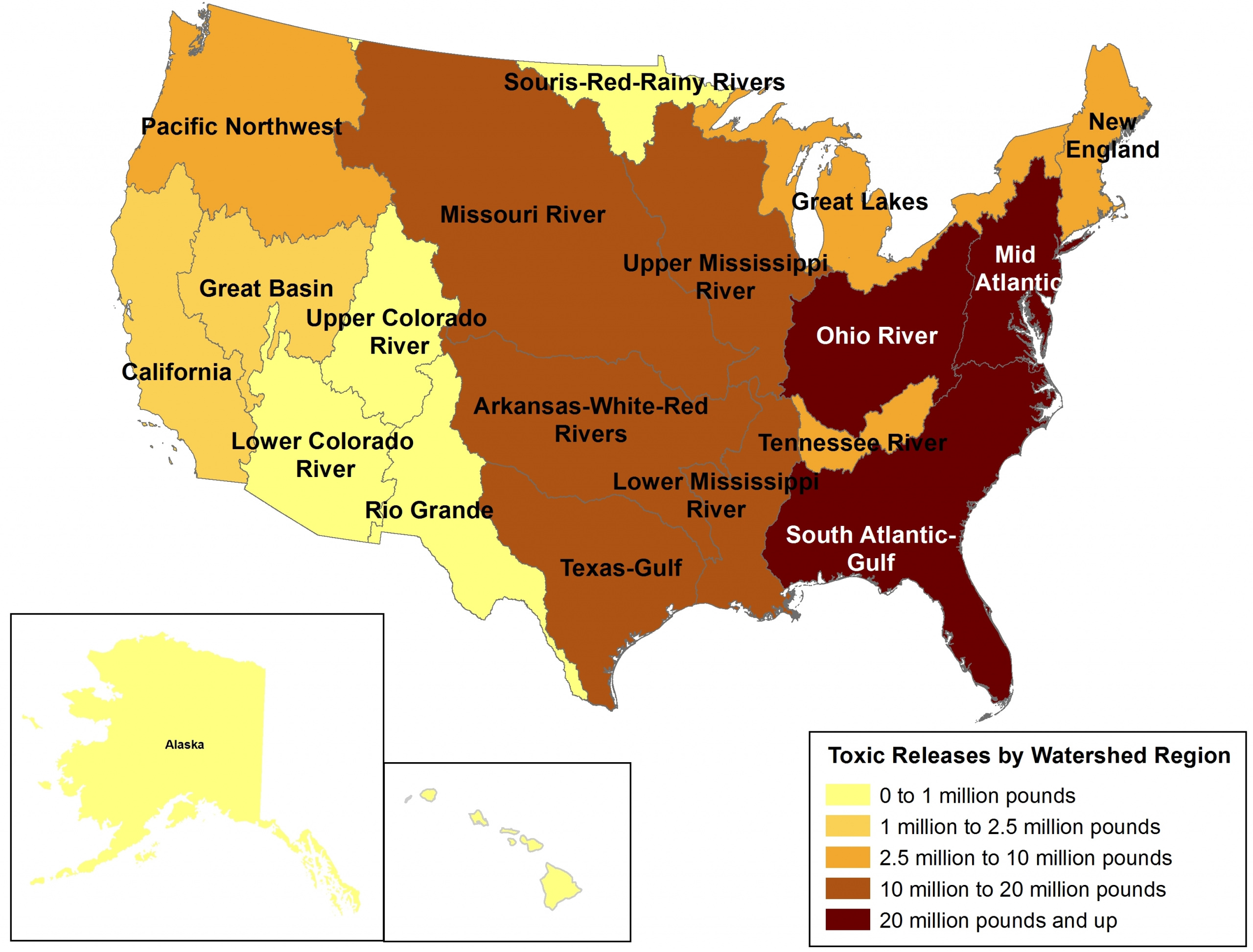Jeff Inglis
Policy Analyst
More than 40 years after passage of the Clean Water Act, industrial polluters continue to release more than 206 million pounds of toxic chemicals into America’s waterways each year. Wasting Our Waterways quantifies the amount of industrial pollution released into individual rivers, lakes and other waterways nationwide, names the states and waterways with the greatest releases of chemicals linked to environmental toxicity and human health problems, and issues a call to action to restore the promise of the federal Clean Water Act.
Industrial facilities continue to dump millions of pounds of toxic chemicals into America’s rivers, streams, lakes and ocean waters each year – threatening both the environment and human health. According to the U.S. Environmental Protection Agency (EPA), toxic discharges from industrial facilities are responsible for polluting more than 17,000 miles of rivers and about 210,000 acres of lakes, ponds and estuaries nationwide.
To curb this massive release of toxic chemicals into our nation’s water, we must step up Clean Water Act protections for our waterways and require polluters to reduce their use of toxic chemicals.
Industrial facilities dumped 206 million pounds of toxic chemicals into American waterways in 2012, according to reports from those facilities to the national Toxics Release Inventory (TRI). (See Table ES-1 and Figure ES-1.)

Several of these watershed regions contain multiple outlets to the ocean. Toxics released in these areas do not all follow the same path to the sea.


Toxic chemicals linked to serious health effects were released in large amounts to America’s waterways in 2012.
Industrial facilities – especially those operated by corporate agribusiness – continue to release high volumes of nitrates into America’s waters.

Toxic chemicals vary in the severity of the threat they post to the environment and human health. When weighted by toxicity of releases, the watersheds receiving the most toxic discharges were the Lower Brazos River (Texas), the Lower Grand River (Louisiana), and the North Fork Humboldt River (Nevada). (See Table ES-4.)

To protect the public and the environment from toxic releases, the United States should prevent pollution by requiring industries to reduce their use of toxic chemicals and restore and strengthen Clean Water Act protections for all of America’s waterways.
The United States should restore Clean Water Act protections to all of America’s waterways and strengthen enforcement and permitting under the Clean Water Act.
State and federal policies should move industrial polluters away from the use of toxic chemicals, in favor of safer alternatives. Specifically, state and federal officials should:
The data in this report do not cover the entire volume of toxic chemicals released to the environment – just the ones released to surface waterways by industrial facilities that report to the U.S. EPA’s Toxics Release Inventory. To expand understanding of toxic releases, policymakers should:
Policy Analyst
Tony Dutzik is associate director and senior policy analyst with Frontier Group. His research and ideas on climate, energy and transportation policy have helped shape public policy debates across the U.S., and have earned coverage in media outlets from the New York Times to National Public Radio. A former journalist, Tony lives and works in Boston.
